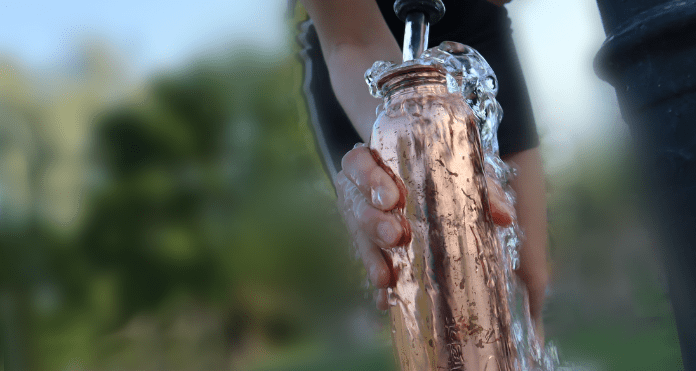Copper bottle in the fight against bacteria and viruses

Copper bottle, glass bottle, plastic bottle...
What's the difference?
For many reasons, using a reusable water bottle is a better choice than constantly buying disposable ones. But are we doing our body good by doing so?
Moisture is an extremely favorable environment for the development of bacteria and viruses.
The following is quality scientifically validated information on the bacterial situation on reusable bottles.
Why is that important?
Our immunity can be weakened for many reasons - hypothermia, stress, poor eating habits, insufficient sleep...
In those moments, increased exposure to harmful bacteria and viruses more easily activates various inflammatory processes in the body, and colds, bacterial or viral infections occur.
Bacteria count on reusable plastic bottles
This study found that the average number of bacteria on reusable plastic bottles was above 313,000 CFU.
( unit of the number of developed bacterial colonies per square centimeter ).
That number significantly exceeds the number of bacteria on a public toilet seat and a pet's favorite toy combined.
Let's pause for a moment...

More than 60% of the bacteria found on reusable plastic bottles are scientifically recognized pathogens such as E. Coli.
The even better news is that this number increases the longer the water sits!
The number of bacteria on a glass bottle
It has been proven that the glass bottle is also not resistant to the accumulation of bacteria.
On the graph we can see the growth of bacteria in an unused glass bottle.

Explanation of the graph:
The stationary bottle is shown by the solid dotted line, and the empty dotted line is the bottle that is shaken from time to time.
Although the growth is greater in the second case, it is evident that the bacteria multiply rapidly in the glass bottle as well.
You can read the entire research here .
Bacteria on metal bottles - copper bottle and metal bottle
The most common causes of bacterial diseases such as Escherichia coli, Staphylococcus aureus, L. monocytogenes, Salmonella e.. ... die within 4 minutes on the copper surface!
The steel surface has no such effect.

Explanation of the graph:
The minutes are displayed horizontally and the number of surviving bacterial colonies vertically.
The thick black line inside the graph represents the steel surface, and the green (in the first) and orange (in the second) copper surface.
On both graphs we can clearly see that within a few minutes the number of bacteria on the copper was drastically reduced, while the steel had no effect.
A copper water bottle naturally sterilizes bacteria and viruses
Within a few hours, the Enlight copper bottle cleans the water from all bacteria and viruses and prevents their development. For this reason, the water stored in it remains fresh for a long time and without unpleasant odors.
In addition, by taking in copper-plated water, we strengthen our immunity.
How do we know that?
In many hospitals, instead of steel, copper doorknobs and handrails are installed, in order to reduce the spread of infections.
This research by Science Direkt shows how the risk of infection in an American nursing home has been drastically reduced since all handrails were changed to copper.
This clearly shows - if you want your water to remain clean for a long time, the most ideal choice is - a copper water bottle.
You can find out more about it in this article
Copper for stronger immunity against flu and colds 👈
Introducing Enlight copper bottles
Handmade from high-quality copper, quality controlled.
SEE THE OFFER OF ENLIGHT COPPER BOTTLES 👈
For any questions, we are here for you at
info@enlightlove.com
+385 95 368 8228
(Viber / WhatsApp)
You can also order by phone.
___________________________
NEW FROM ENLIGHT
We present to you the revolutionary
Anti-Age product!
Rejuvenation inside and out.
The simplest and most effective yet!
Enlight Anti-Age Hydrogen Bottle produces water with extra hydrogen that rejuvenates all cells and prevents their deterioration.
It has proven therapeutic effects on more than 150 different health conditions.
No side effects!
SEE THE OFFER AT THIS LINK:
More than water! Pure energy for our body!
SOURCES:
Science Direct
LINK
Microbiology Society
LINK
Berkeley Neuroscience
LINK
National Library of Medicine
LINK 1
LINK 2
Treadmill Review
LINK
European Food Safety Authority
LINK
Nutra Ingredients.com
LINK
Nutrition.com
LINK
European copper alliance
LINK


